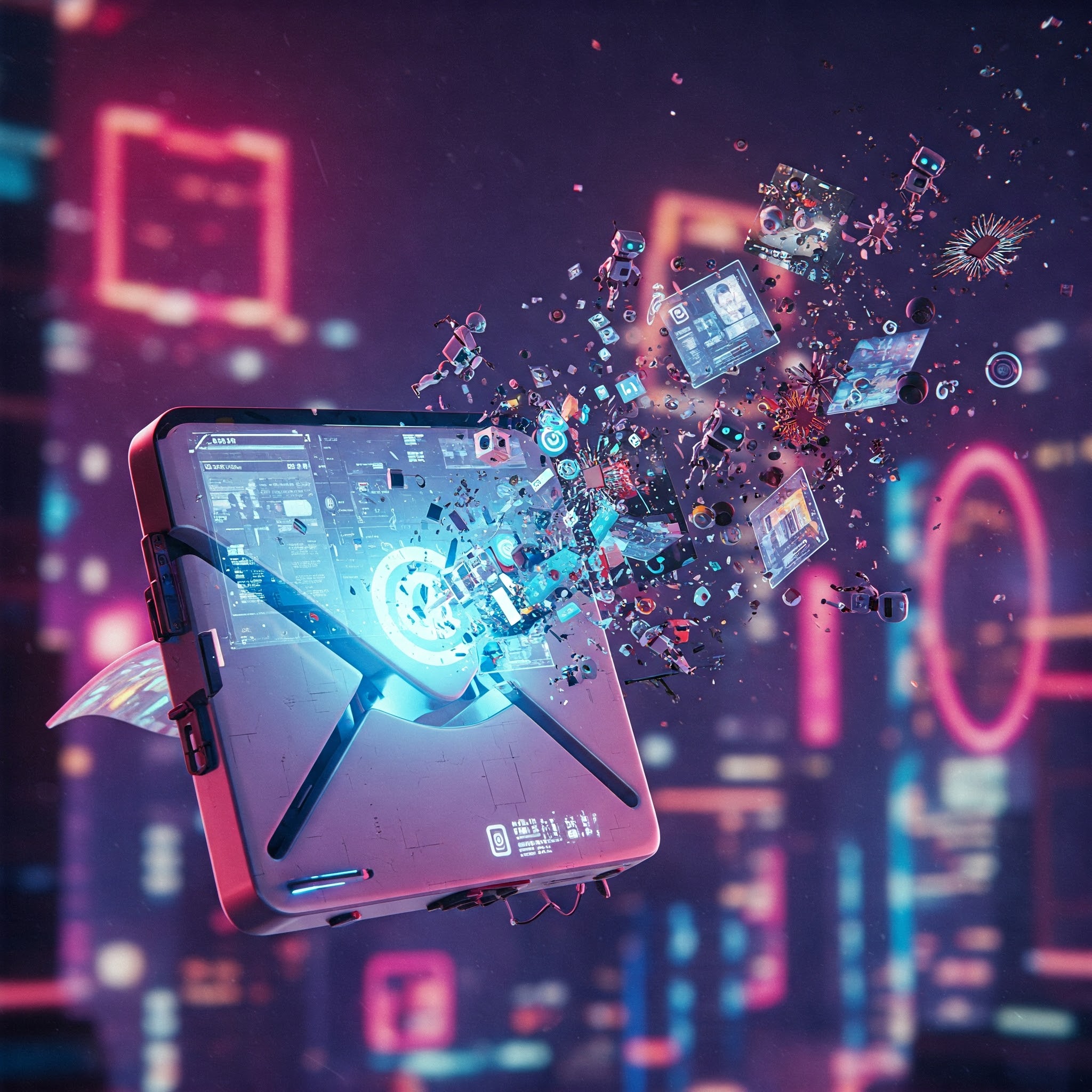So, AI can make art now. Big deal. Everyone’s all hot and bothered about Ghibli-esque landscapes. Cute. But what if your soul craves something… more? Something that doesn’t involve wide-eyed forest spirits? ChatGPT-4o is here, and it’s got more than just Miyazaki in its digital paintbox. Let’s dive into some styles that might actually be worth generating.
1. Cyberpunk Neon: Because the Future is Grimy (and Bright)
Forget pastoral scenes. We’re talking towering megastructures, perpetual twilight, and enough neon to induce seizures. Think Blade Runner 2049 after a Red Bull binge. Perfect for illustrating that dystopian novel you’re definitely going to finish… someday. Or just generating a cool wallpaper. The AI’s attempt might be a blurry mess of colors and vague architectural shapes, but hey, that’s kinda cyberpunk too, right?
2. Baroque Oil Painting: For When You Want to Feel Fancy
Channel your inner Rembrandt (or Caravaggio, if you’re feeling particularly dramatic). This style is all about heavy shadows, dramatic lighting, and enough texture to make you want to touch your screen. The AI might struggle with the subtle nuances of a human touch, but you’ll probably end up with something that looks vaguely like it belongs in a museum (a very modern museum, perhaps).
3. Pixel Art: Embrace the Blockiness
Remember the good old days of 8-bit sprites and limited color palettes? Pixel art is back, baby! And now, AI can churn it out on demand. Transform your photos into retro game assets, design your own NFT collection, or just relive your childhood. Be warned: the AI’s version might be a bit too perfect. You might need to add some intentional errors to make it truly authentic.
4. Pixar-Inspired Animation: Make it Cute, But Not Too Cute
Soft edges, bright colors, and characters with impossibly large eyes. It’s the Pixar formula, and now AI can replicate it (sort of). Expect something that looks like a rejected character design from Toy Story 5. Still, it’s a solid option if you need some family-friendly visuals, and the AI likely will be able to generate animals talking. Let’s be honest, that’s half the appeal of Pixar anyway.
5. Cartoon Style: From Looney Tunes to… Whatever’s Popular Now
The possibilities are endless. Go for classic slapstick humor, modern minimalist aesthetics, or something in between. The AI can probably handle it (with varying degrees of success). Just be prepared to babysit the process. You might end up with a disturbing fusion of Rick and Morty and Peppa Pig if you’re not careful.
6. Gothic Noir: Because Darkness is Cool
High contrast, deep shadows, and a general sense of unease. This style is perfect for mystery novels, horror games, or just expressing your inner angst. The AI should excel at creating moody visuals, but be prepared for some truly terrifying results. You might accidentally summon a demon or two in the process. (We are not responsible for any supernatural occurrences.)
7. Caricature Art: Exaggerate Everything
Turn your friends (or enemies) into hilarious caricatures with this style. Expect bold outlines, exaggerated features, and a healthy dose of humor. The AI might struggle with nuance, but it should be able to produce some genuinely funny (and possibly offensive) results. Use with caution.
8. Surrealist Abstraction: Embrace the Weird
Inspired by Dali, Magritte, and other masters of the bizarre, surrealist abstraction is all about bending reality and challenging perception. Expect illogical juxtapositions, fluid shapes, and a general sense of WTF-ness. The AI should have no problem generating something utterly incomprehensible. Whether it’s good art is another question entirely.
9. Manga and Anime: For the Otaku Within
Big eyes, dynamic action, and enough hair gel to defy gravity. This style is a staple of Japanese pop culture, and now AI can replicate it (sort of). Expect something that looks like a generic anime opening sequence. Still, it’s a fun way to explore the world of Japanese art, even if the results are a bit derivative.
10. Impressionist Brushwork: Capture the Light (and the Vibe)
Emulate Monet, Renoir, and other impressionist masters with this style. Focus on loose brushstrokes, vibrant colors, and capturing the essence of a scene. The AI might struggle with the subtleties of light and shadow, but you should end up with something vaguely resembling a Monet painting… if Monet had access to a GPU.
Prompting 101: How to Actually Get Something Decent
Getting the AI to produce the desired results requires some finesse. Here are a few tips:
- Be Specific: Don’t just say “cyberpunk.” Say “a neon-lit cyberpunk city at night, with rain reflecting off the wet streets and towering holographic advertisements.”
- Details, Details, Details: Mention color palettes, textures, lighting, and composition. The more information you provide, the better the AI can understand your vision.
- Experiment: Don’t be afraid to tweak your prompts and try different variations. The AI is constantly learning, and you might stumble upon some unexpected (and amazing) results.
So there you have it. Ten AI art styles that go beyond the Ghibli craze. Now go forth and create… or, you know, just generate some mildly interesting images to post on social media. Either way, have fun. And try not to break the AI in the process.

